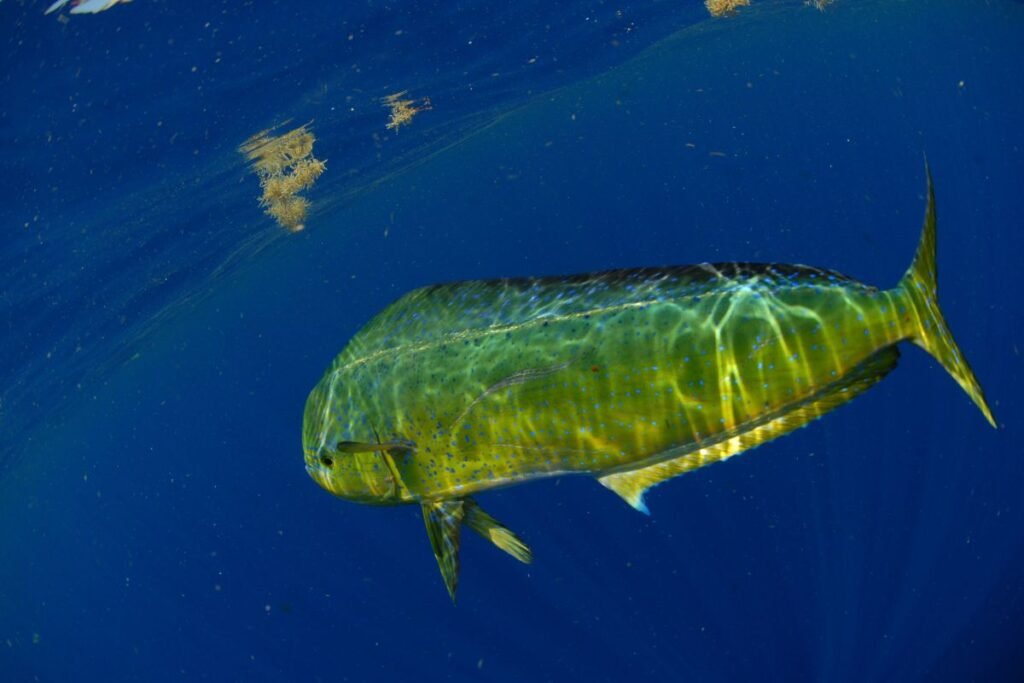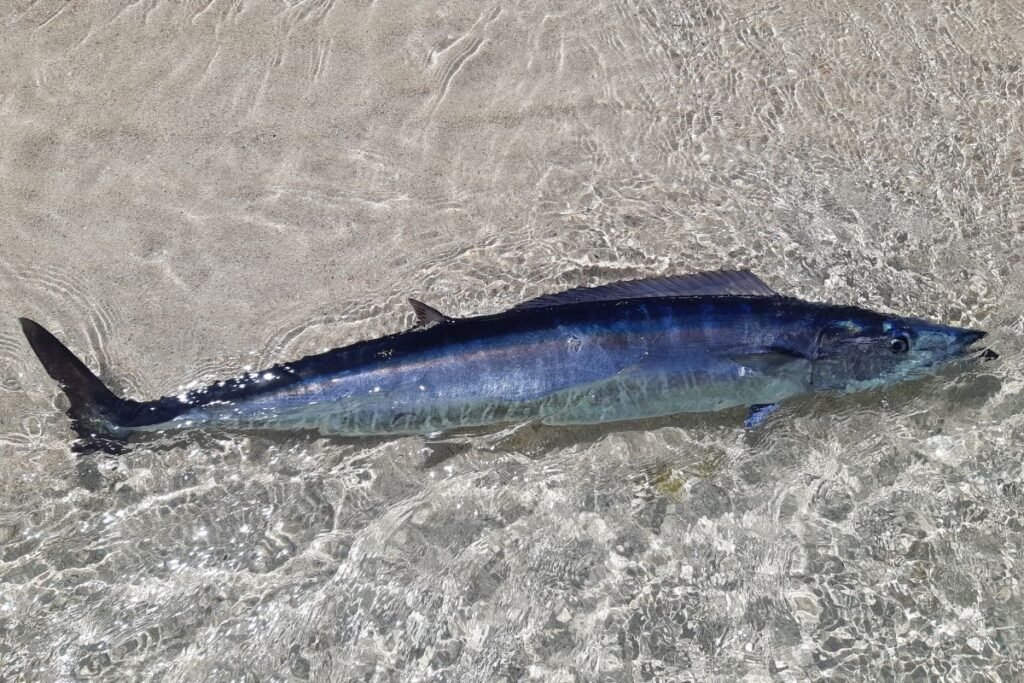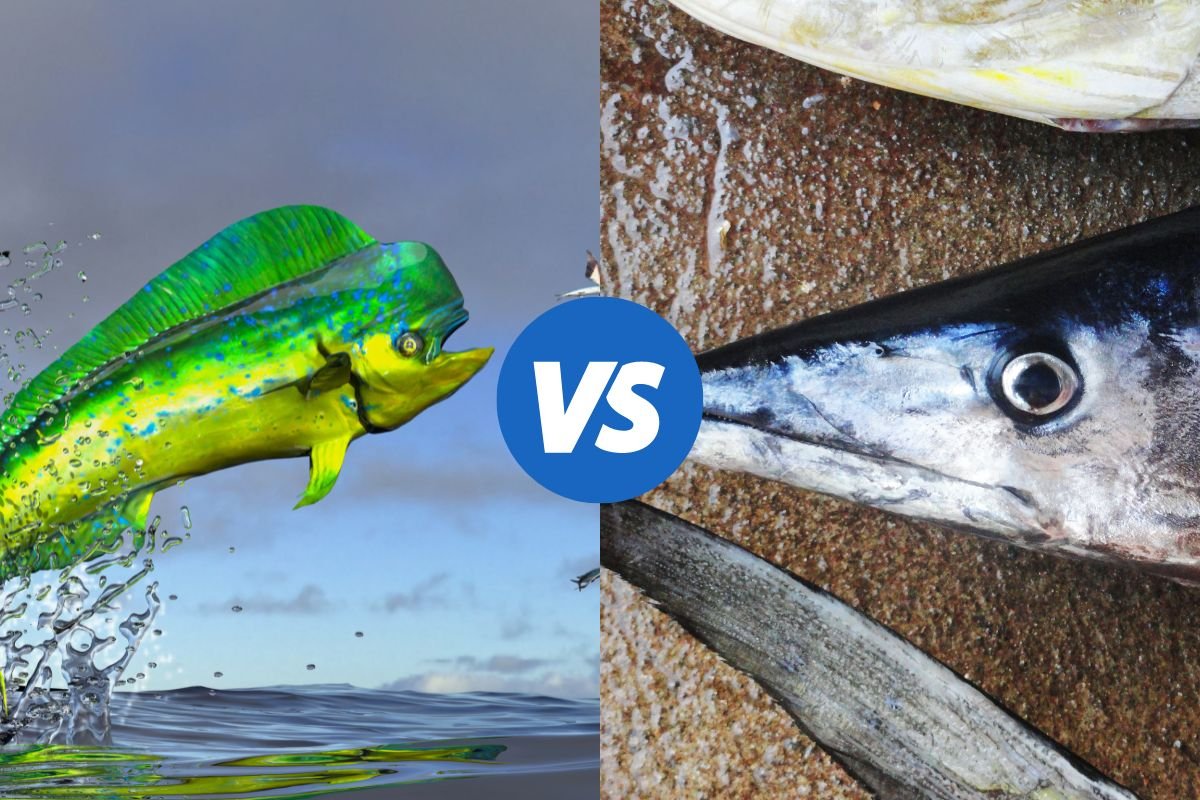The first time I tried mahi mahi, it literally felt like it just melted in my mouth. The flavors of both of these fish are so out of this world it’s hard to describe! When prepared correctly, of course.
Mahi-mahi and wahoo are both large, predatory fish found in tropical and subtropical waters around the world. Recreational anglers and seafood lovers alike often compare these two ocean fighters.
While they share some characteristics, there are several key differences between mahi-mahi and wahoo when it comes to appearance, taste, size, nutrition, mercury levels, habitat, fishing techniques, popularity, price, and sustainability.
Appearance and Taste
In terms of physical appearance, mahi-mahi and wahoo look quite different. Mahi-mahi have a distinctive golden greenish-blue back that fades to silvery white on the belly. They have an elongated body shape with a blunt head and a forked rigid tail fin meant for speed.
Wahoo, on the other hand, tend to have a steel blue back that fades to silver sides and a white underside. They are shaped like a torpedo with a pointed snout and a wide forked tail.
Mahi-mahi is sometimes referred to as “dolphin fish,” but it is unrelated to marine mammals like dolphins. Wahoo occasionally goes by the name “ono” in Hawaii.
The flavor and texture of the two fish is where they really differ. Mahi-mahi is prized for its mild, sweet taste and firm flaky texture. It has versatile white flesh that absorbs other flavors well.
Wahoo, however, is favored by seafood aficionados for its bolder, richer flavor and moist, juicy meatiness. It has a slightly stronger taste and denser texture than the milder mahi-mahi.
So for those who enjoy rich seafood, wahoo is usually seen as superior in terms of flavor. But for its sweet mildness and ease of preparation, mahi-mahi is the more mainstream and versatile option.

Size and Weight for Mahi-Mahi and Wahoo
On average, mahi-mahi and wahoo differ in maximum size and weight:
- Mahi-mahi grow up to 6 feet long and can weigh up to 70 pounds. However, they are usually caught at 20-40 pounds. The current all-tackle world record is 87 pounds.
- Wahoo can reach lengths over 8 feet and can weigh up to 200 pounds. More commonly, they are 30-80 pounds. The IGFA world record is 184 pounds.
So while mahi-mahi get larger than many fish, wahoo reach significantly bigger sizes overall.
Nutrition Facts
Here is a detailed comparison of the nutritional value of 4 ounces of mahi-mahi vs wahoo:
| Nutrient | Mahi-mahi | Wahoo |
|---|---|---|
| Calories | 128 | 144 |
| Fat | 2.6 g | 3.7 g |
| Saturated Fat | 0.7 g | 1.1 g |
| Protein | 24 g | 28 g |
| Cholesterol | 83 mg | 76 mg |
| Sodium | 74 mg | 92 mg |
As you can see, wahoo contains more calories, fat, and protein. But both are lean protein sources that are low in saturated fat.
Mercury Levels
Due to their high trophic level, mahi-mahi and wahoo contain moderate mercury levels:
| Fish | Mercury (ppm) |
|---|---|
| Mahi-mahi | 0.166 |
| Wahoo | 0.144 |
Mahi-mahi has slightly higher mercury but both are still low-mercury choices safe to eat regularly.
Habitat and Range
In addition to their physical differences, mahi-mahi and wahoo live in slightly different ocean habitats. Both species are epipelagic, meaning they inhabit the upper sunlit zone of the open ocean roughly 200 meters deep or less.
However, mahi-mahi tend to stick to open waters between 70-83°F while wahoo prowl around structure. Wahoos prefer clear water and are often found around reefs, ledges, islands, and seamounts while mahi-mahi focus more on temperature breaks and floating debris.
Despite some habitat differences, both fish have a global distribution in tropical and subtropical waters.

Mahi-Mahi and Wahoo Fishing Methods
Popular fishing techniques reflect the habitats of these species. Mahi-mahi are most often caught by trolling with fast-moving lures or bait at varying depths to mimic prey.
Their aggressive strikes and acrobatic jumps when hooked make them a favorite for recreational anglers. Wahoo also fall for high-speed trolled baits, though many serious wahoo fishermen use deep-dropping methods around structure.
Live bait on wire rigs lowered into the depths, vertically jigged, attracts wahoo cruising below. Both species make blistering runs when hooked, testing even the most prepared anglers.
Popularity
In terms of popularity:
- Mahi-mahi is one of the most popular gamefish species for recreational anglers due to its availability and fighting spirit. It is also widely available in restaurants.
- Wahoo has a passionate niche following among serious big game fishermen but is not encountered as often as the abundant mahi-mahi. Less common on menus.
So mahi-mahi enjoys broader mainstream popularity and availability.
Price
When it comes to availability and price, mahi-mahi is definitely the more accessible of the two fish. Its abundance and year-round open season in most places make it a popular target. Wahoo have a more limited distribution and specific seasonal windows.
The retail pricing also differs between mahi-mahi vs wahoo:
- Mahi-mahi costs $15-$25 per pound at market, making it fairly expensive.
- Wahoo fetches $20-$30+ per pound retail due to its rarity, making it a premium choice.
Wahoo’s richer flavor and limited supply command a higher price tag.
Mahi-Mahi Vs Wahoo Sustainability
In terms of sustainability:
Sustainability concerns also separate these two species currently. With healthy global populations and catch limits, mahi-mahi is rated a “Good Alternative” by Seafood Watch.
But due to issues like overfishing and habitat damage from certain gear types, wahoo ranks as “Avoid” for now. So mahi-mahi stands as the more eco-friendly option between the two fish. Proper management will be key for the future health of wahoo fisheries worldwide.
Want to learn about other types of fish? Tuna Vs Swordfish
Conclusion
While mahi-mahi and wahoo share some characteristics, they differ significantly in appearance, maximum size, flavor, availability, fishing techniques, popularity, pricing, and sustainability.
Mahi-mahi is milder tasting with a more eco-friendly fishery. Wahoo is more prized for its flavor but faces management challenges. Both offer great nutritional benefits and sport fishing excitement. Choosing between mahi-mahi vs wahoo depends on individual preferences for taste, fishing goals, budget, and conservation.
While I have tried both of these fish and found them both to be amazing, it’s the mahi mahi, for me! Which one do you like better? Tell us in the comments below.



